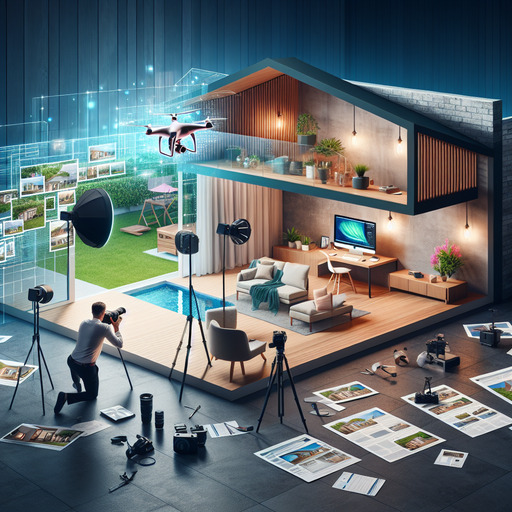
-
Table of Contents
- Mastering Real Estate Photography: Tips, Techniques, and Tools
- Understanding the Importance of Real Estate Photography
- The Impact of Quality Photos on Property Sales
- Essential Real Estate Photography Tips
- 1. Mastering Real Estate Photography Lighting
- 2. Choosing the Right Real Estate Photography Equipment
- 3. Real Estate Drone Photography for Unique Perspectives
- Editing and Enhancing Real Estate Listing Photos
- Real Estate Photography Services: When to Hire a Professional
- Real Estate Photography Pricing: What to Expect
- Conclusion
- Questions and Answers
- 1. What is the best time of day for real estate photography?
- 2. How can I make small rooms look bigger in photos?
- 3. Is drone photography necessary for all real estate listings?
Mastering Real Estate Photography: Tips, Techniques, and Tools
In the competitive world of real estate, first impressions are everything. High-quality real estate photography can make or break a property listing, influencing potential buyers’ decisions before they even step foot inside. This guide will explore essential tips, techniques, and tools to elevate your real estate photography game, ensuring your listings stand out in a crowded market.
Understanding the Importance of Real Estate Photography
Real estate photography is more than just snapping pictures of a property. It’s about capturing the essence and potential of a space, enticing buyers to envision themselves living there. According to the National Association of Realtors, 87% of home buyers found photos to be the most useful feature when searching for a home online.
The Impact of Quality Photos on Property Sales
- Properties with high-quality images sell 32% faster than those with lower-quality visuals.
- Listings with professional photos receive 118% more online views.
- Homes with more photos sell for $3,000 to $11,000 more.
Essential Real Estate Photography Tips
To capture stunning real estate photos, consider these practical tips:
1. Mastering Real Estate Photography Lighting
Lighting is crucial in real estate photography. Natural light is your best friend, so shoot during the day when rooms are well-lit. Use additional lighting equipment to fill in shadows and highlight features.
2. Choosing the Right Real Estate Photography Equipment
Invest in a quality DSLR camera with a wide-angle lens to capture more of the room in each shot. A sturdy tripod is essential for stability and achieving sharp images.
3. Real Estate Drone Photography for Unique Perspectives
Drone photography offers a unique perspective, showcasing the property’s exterior and surrounding area. This can be particularly effective for large estates or properties with scenic views.
Editing and Enhancing Real Estate Listing Photos
Post-processing is a vital step in real estate photography. Use editing software to adjust brightness, contrast, and color balance. Remove any distractions or imperfections to present the property in its best light.
Real Estate Photography Services: When to Hire a Professional
While DIY photography can be cost-effective, hiring a professional can ensure top-notch results. Professionals have the expertise and equipment to capture and edit photos that truly showcase a property’s potential.
Real Estate Photography Pricing: What to Expect
Pricing for real estate photography varies based on location, property size, and the photographer’s experience. On average, expect to pay between $100 and $300 for a standard shoot, with additional costs for drone photography or extensive editing.
Conclusion
High-quality real estate photography is a powerful tool in the property market. By mastering lighting, choosing the right equipment, and considering professional services, you can create compelling images that attract buyers and close sales faster.
For more insights into the impact of photography on real estate sales, check out this Wikipedia page on real estate photography.
Questions and Answers
1. What is the best time of day for real estate photography?
The best time for real estate photography is during the day when natural light is abundant. Early morning or late afternoon can provide soft, flattering light.
2. How can I make small rooms look bigger in photos?
Use a wide-angle lens to capture more of the room and shoot from a corner to maximize space. Keep the room tidy and decluttered to enhance the sense of space.
3. Is drone photography necessary for all real estate listings?
Drone photography is not necessary for all listings but can be beneficial for properties with large exteriors, unique landscapes, or scenic views.
If you’re interested in learning more about our real estate photography services or have questions about this blog, please reach out to us via our contact page.